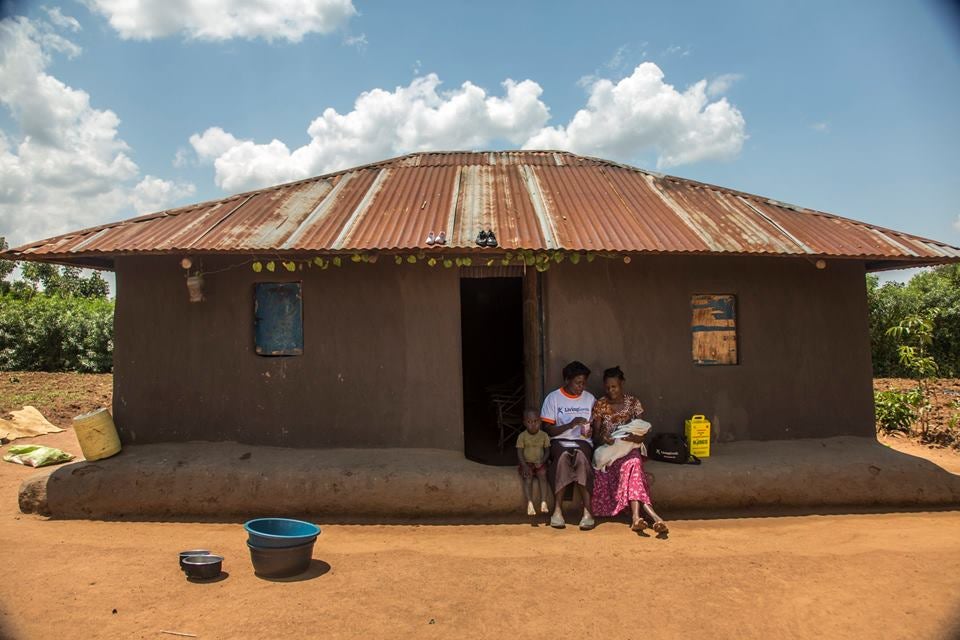
Community health workers go door-to-door providing services in communities such as in Busia, Western Kenya. Photo courtesy of Living Goods
Community health workers are essential in delivering healthcare to some of the world’s most sickly and vulnerable populations. They provide important sources of healthcare for people who are unable to access healthcare facilities due to mobility issues, transportation issues, or because they live in rural and isolated areas. The definition of a community health worker is very broad and their duties can range from taking blood pressure and ensuring patients take their medicine, to buying groceries and cooking meals. These positions can be both paid and unpaid. Some are volunteers, and others have volunteered their lives to serving the common good.
According to the World Health Organization, approximately 5.6 million children under the age of 5 died in 2016. The leading causes of death for children globally under the age of 5 are malaria, diarrhea, and pneumonia. Simple commodities such as water filters, bed nets, and pregnancy check-ups are known to greatly reduce mortality rates. This is where Living Goods comes in. According to their website, Living Goods empowers people to improve the health of their families, friends and communities. They achieve this goal by supporting “networks of ‘Avon-like’ health entrepreneurs who go door to door to teach families how to improve their health and wealth and sell life-changing products such as simple treatments for malaria and diarrhea, safe delivery kits, fortified foods, clean cook stoves, water filters, and solar lights. By combining the best practices from business and public health, we are dramatically lowering child mortality AND creating livelihoods for thousands of enterprising women.”
The concept of community health workers has been around for a long time, but companies like Living Goods have added a new twist to this age-old profession while adding to the value of community health workers by providing education and access to a variety of life-changing products. This model utilizes technology to help improve the lives of people all over the world by allowing community health workers to bring products and healthcare services to people who may not otherwise have access to them. Living Goods staff, decked out in Living Goods t-shirts and caps, are able to cover 100 households each in countries such as Uganda and Kenya. The staff offers basic healthcare services, while referring more serious cases to local healthcare facilities. The staff carry kits with essentials including thermometers (to check for fevers), measuring tapes (to measure newborns’ growth), and smartphones with diagnosis and pregnancy guideline apps.
Another beneficial aspect of the program is its convenience and availability. A parent can SMS a local community health worker when they have a sick child, and following a diagnosis, the parent can then purchase medicine directly from the community health worker at a price that is less expensive than the local pharmacy. Living Goods’ director of communications has referred to this model as being “more like an Uber model at this point” than the traditional Avon model.
In order to coordinate its services, Living Goods works with local governments and health ministries in Uganda and Kenya—the two countries where the company currently has a presence. While the program is still relatively new, it is growing fairly rapidly. In Uganda, where the program began, there are currently 3,000 health promoters, and there are plans to double that number within the next four years. There are currently 1,500 community health workers in Kenya, and the organization has a goal of increasing that by 1,000 by the end of the year.
The payment model is also innovative. Community health workers who work under Living Goods are not paid salaries, instead they are paid when they visit a pregnant woman and provide prenatal services, and it should be noted that the visits are free for the patient. Alternatively, volunteers can earn money by selling household products such as solar lights, water filters, and clean cook stoves.
This program is beneficial to the communities it serves in a variety of ways. First, it helps provide products and healthcare services to people who may not otherwise have access. Additionally, it provides respect and income to volunteers, many of whom tend to be women.



